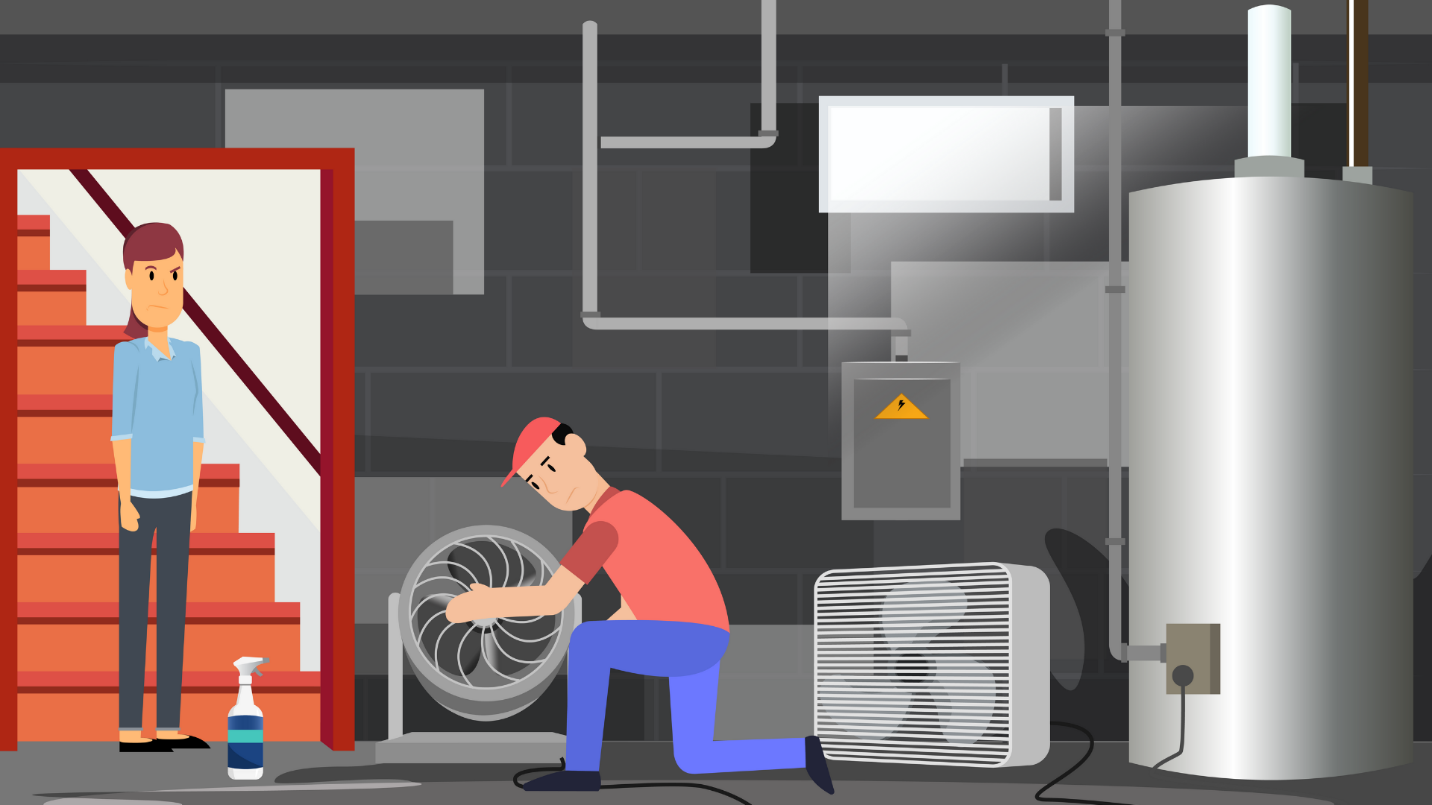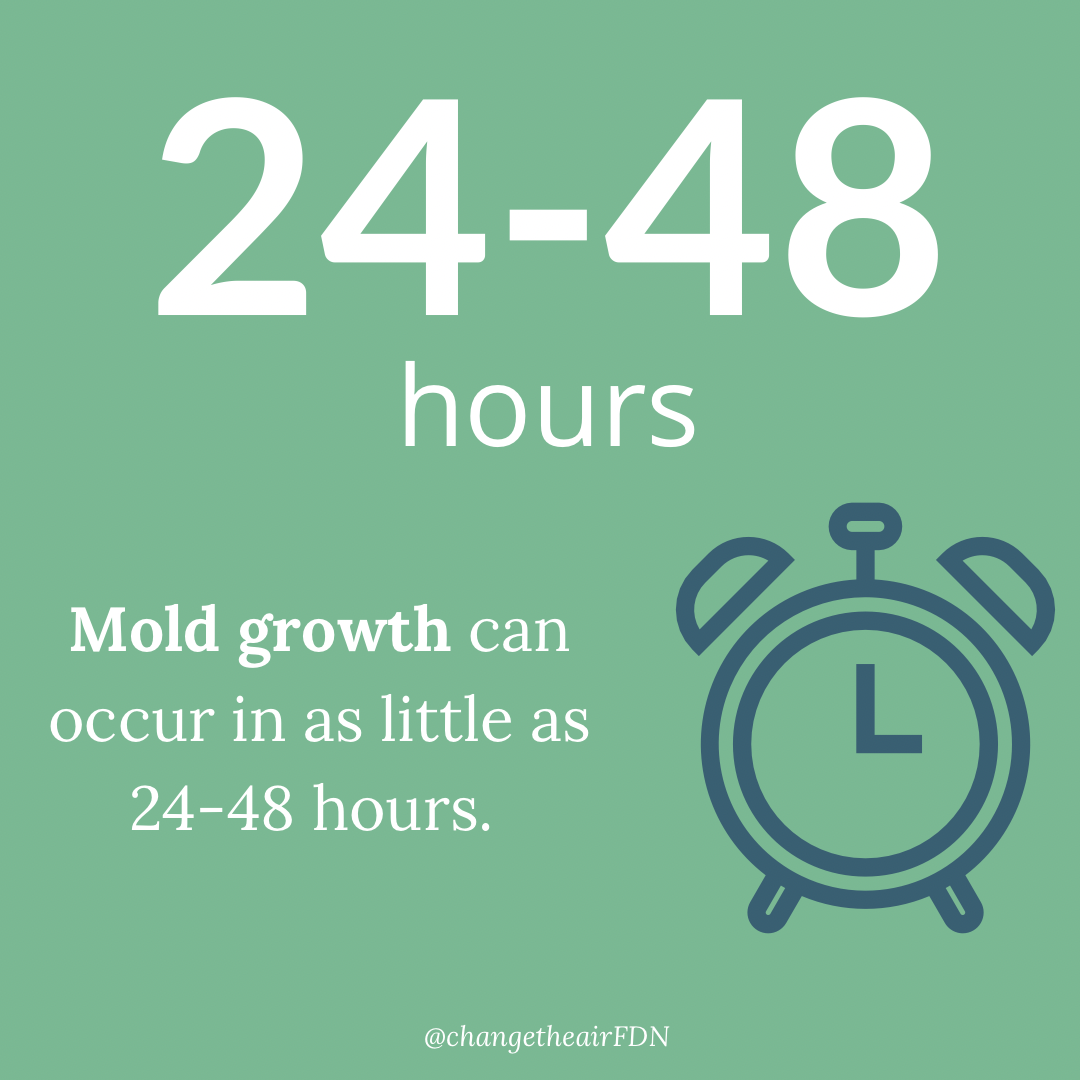The Millers – Part 2
Today brings us to the second part of the journey for our fictional family, the Millers—a family whose story might feel familiar to you.
We last left Sarah Miller discovering standing water in her basement. What happens next for her family happens in homes every day across the world.
Like many people, Sarah simply wants a safe and permanent solution to the reoccurring water in her basement. But when a local company’s “fix” doesn’t work, Sarah begins to wonder: could her house be making her family sick?
Part 2: The "Fix"

Sarah couldn’t believe she was staring at another puddle of water in the corner of the basement. This had already happened before, and she had already paid a contractor a hefty sum to “fix” the problem last fall.
So much for taking the kids to the park, she thought to herself. Not that she had much energy to chase them around these days anyway. Her mood worsened the moment she realized this would be another unexpected bill she couldn’t really afford.
Sarah quickly calculated the number of days until her next paycheck and sighed. While she was pretty sure she could mop up most of the water, she groaned when she noticed the drywall was wet and the carpet was starting to smell again.
She reluctantly decided it was worth having a local company come out to evaluate the situation and help dry out the basement.
With any luck, Sarah thought, maybe they could finally get rid of the occasional musty odor in the basement.
Better yet, maybe they could finally fix the problem once and for all.
Grudgingly, Sarah began to mop up the standing water as she waited for reinforcements to show up.
In the meantime, she shouted for Sam to bring her the dehumidifier from the garage. There didn’t seem to be a lot of water, but it had spread from the unfinished portion of the laundry room to the makeshift carpeted study she set up after her father moved in a few years ago. Better to be safe than sorry, she thought to herself.
The next morning, a local company arrived to evaluate and finish drying out the basement. Sarah was relieved when they told her they would spray the damp carpet to kill anything that may have started to grow and eliminate any residual odors. She wasn’t sure how long the water had actually been collecting in the basement, so that seemed like a great idea. The local company set up fans and a few dehumidifiers before handing Sarah a bill and reassuring her once again that the drywall didn’t need to be removed.
When she asked what she could do to prevent the problem from happening again, they dismissed her concerns and told her it was common for basements to flood during heavy rains. In fact, it was normal for their area, they said.
As Sarah lay in bed that night, battling her usual insomnia, she couldn’t shake the feeling that a leaky basement shouldn’t be a normal thing.
The next morning, she was woken up from her restless sleep by Sam, who was complaining of another horrible headache. Sophie, too, mentioned being itchy when asking for her inhaler. It was at that point Sarah began to wonder: could the leak in the basement be connected to her family’s increasingly odd collection of symptoms?
Could the house be making them sick?
With this thought in mind, Sarah did what anyone would probably do: She turned on her laptop and typed in “wet basement, musty smell, weird symptoms.” The results shocked her…
To be continued…
Stay tuned for part 3 as Sarah finally uncovers the mystery of what’s really going on in her home!
-GET THE FACTS-

Under the right circumstances, mold can grow in as little as 24-48 hours!
The clock starts the moment your building material gets wet…NOT the moment you discover the leak…NOT the moment the water restoration company finally gets to your house…NOT 3 days later when the building material finally dries out.
Your mold timeline starts the moment the water starts!
For example:
Day 1: Your washing machine overflows. You turn off the water and clean up visible water. (24 hours)
Day 2: Water restoration company arrives. Starts setting up fans and dehumidifiers. (48 hours)
Day 3: Fans and dehumidification continues (possibility of mold growth)
Day 4: Fans and dehumidification continues (possibility of mold growth)
Day 5: Fans and dehumidification continues, and all building materials are declared dry.
If the water damage has been there for more than a couple of days, you should suspect the possibility of mold and bacteria. Consult with an Indoor Environmental Professional to determine if microbial growth is an issue so proper precautions can be taken.
Will a building material that is wet for longer than 48 hours always result in mold growth? No, it doesn’t.
But if a building material isn’t completely dried out in the first 1-2 days, you should proceed with caution.
Keep an eye out for our upcoming interview with Brian Karr, an Indoor Environmental Professional, where we discuss how to inspect your home for mold, water damage, and so much more!
Never miss an update! Join our newsletter and follow the Miller family as they begin to heal their bodies and their home.
